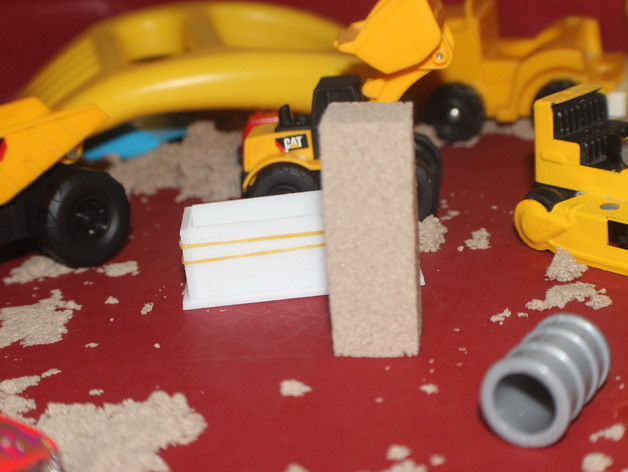
Calculus project 5: Charting data
thingiverse
Human: This is the second segment of a sequence of projects intended for first-year calculus scholars. In this series, students will gain knowledge on how to utilize different mathematical formulas to evaluate the properties of solids and containers. My apologies if the "X" and "x" thing appears confusing, but in certain situations formatting makes using an asterisk impossible, so big X is a variable, and little x represents multiplication. In this portion of the project we will be charting our data from part one that we verified in part three. This will enable students to make predictions on the outcome of the rest of our project. Print Settings Printer: CraftBot Rafts: No Supports: No Resolution: optimum Infill: 30% square Notes: I optimized this thing to be printed in ABS with maximum settings. I would recommend a skirt with an offset of 0mm (otherwise known as a brim) with 2-5 loops for ABS. I would also suggest an increased infill ratio. How I Designed This For this project, I used a free program from Autodesk called TinkerCAD. I have long been a user of AutoCAD which is a desktop drafting program from the same company. I used TinkerCAD to make it easier for educators and learners to be able to more easily replicate what I did. TinkerCAD is awesome because it's not only free, but it's easy to use. It also runs in your browser and has built-in instructional lessons. www.tinkercad.com For part five of this project, I started out with our product from the part two. If you remember, we used X=20mm which gave us a base of 60x20mm, two flaps with dimensions of 60x20mm, and two flaps with dimensions of 20x20mm. We then made this into a mold by adding a channel around the base and extending the flaps. Part 2: http://www.thingiverse.com/thing:1371700 Project: Charting data Objective The objective of this part of the project is to take the data that we have collected so far and put it in a usable form. By the end of this part, students should be able to make educated guesses as to the X value that will allow for maximum volume. Audience Even though the overall project is designed for Calculus scholars, this part of the project can be used for algebra and statistics students as well. Preparation Teachers and students will need access to a computer with a spreadsheet program, preferably excel. Teachers should be comfortable answering questions about the spreadsheet program. Students don't need any prior experience with excel. This project is easier if students stay in their groups of 2-3. Step 1: Calculate Assign all groups an even number from 2-30, and have them solve for the volume of the lidless container with X equal to that value. Step 2: Chart Write down the values on the board of all of the volumes. If you are using the same numbers I am, the results should be as follows: Lidless Box Volume X Volume 2 10752 4 19136 6 25344 8 29568 10 32000 12 32832 16 30464 18 27648 20 24000 22 19712 24 14976 26 9984 28 4928 30 0 Step 3: Use excel to enter data This step will also verify the math in step two. Type "X Values" into column A1, and "Volume" into column B1. Next type all X values into the "X value" column. In box B2 (to the right of the X value "2") use the equation from part one of the project to have excel automatically find the volume. =(100-(2$B2))*(60-(2$B2))$B2 Step 4: Graph Use the graph (scatter) feature to make a graph of your data. Step 5: Make predictions Based on the spreadsheet and the graph, have students make predictions as to what value(s) of X will give the greatest volume. Results It should be easier now for students to see exactly what the volume is doing based on a given value of X. This will give them a firm base to start to learn exactly what a derivative is, in part six!
With this file you will be able to print Calculus project 5: Charting data with your 3D printer. Click on the button and save the file on your computer to work, edit or customize your design. You can also find more 3D designs for printers on Calculus project 5: Charting data.
